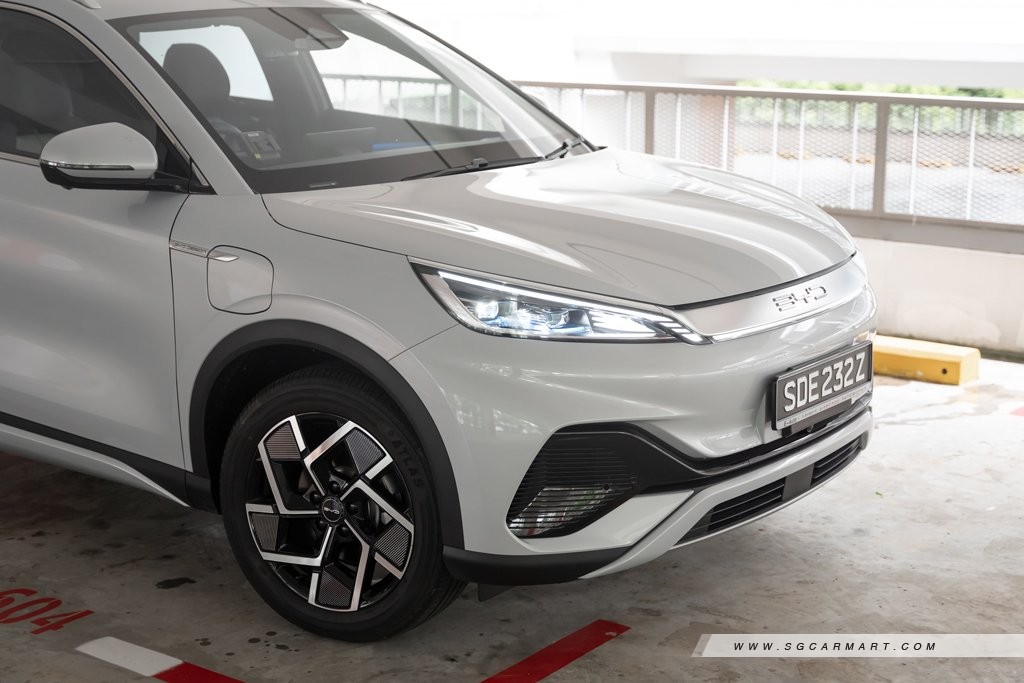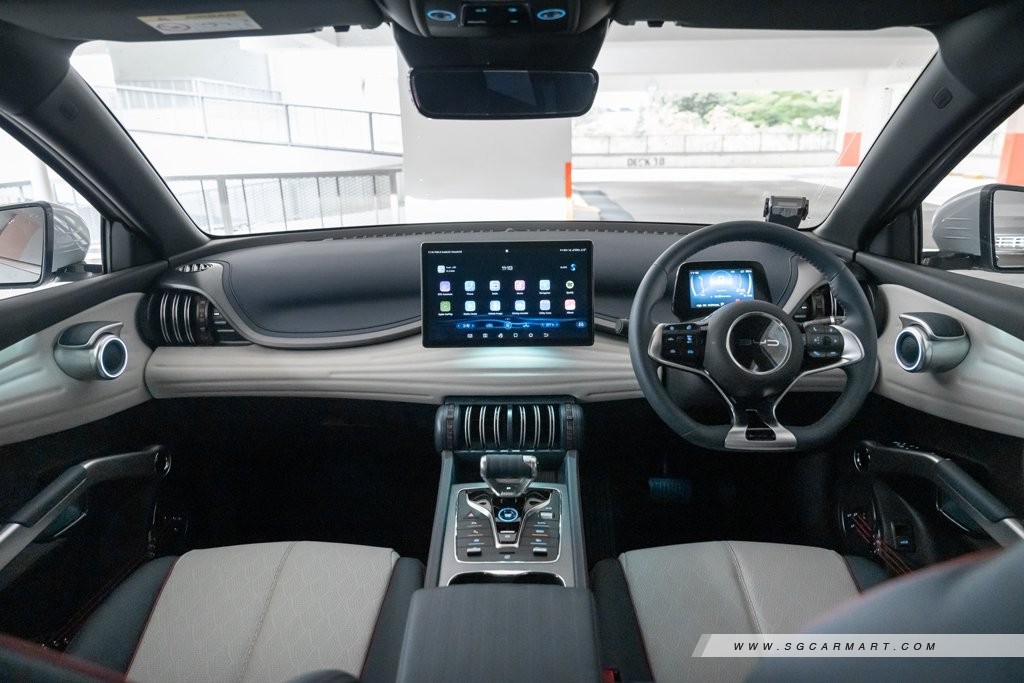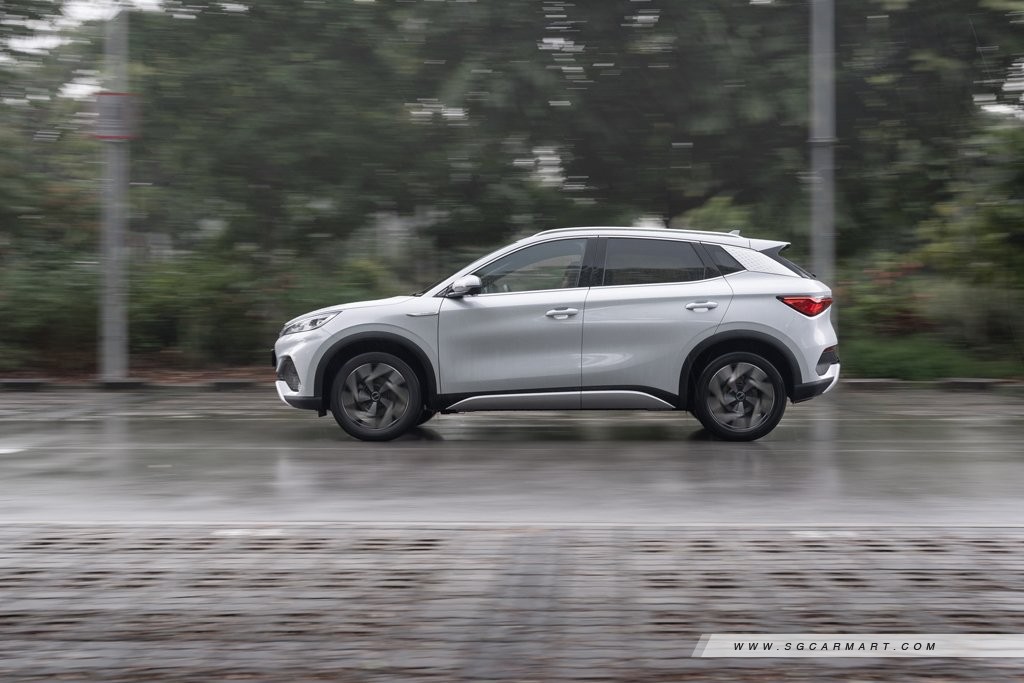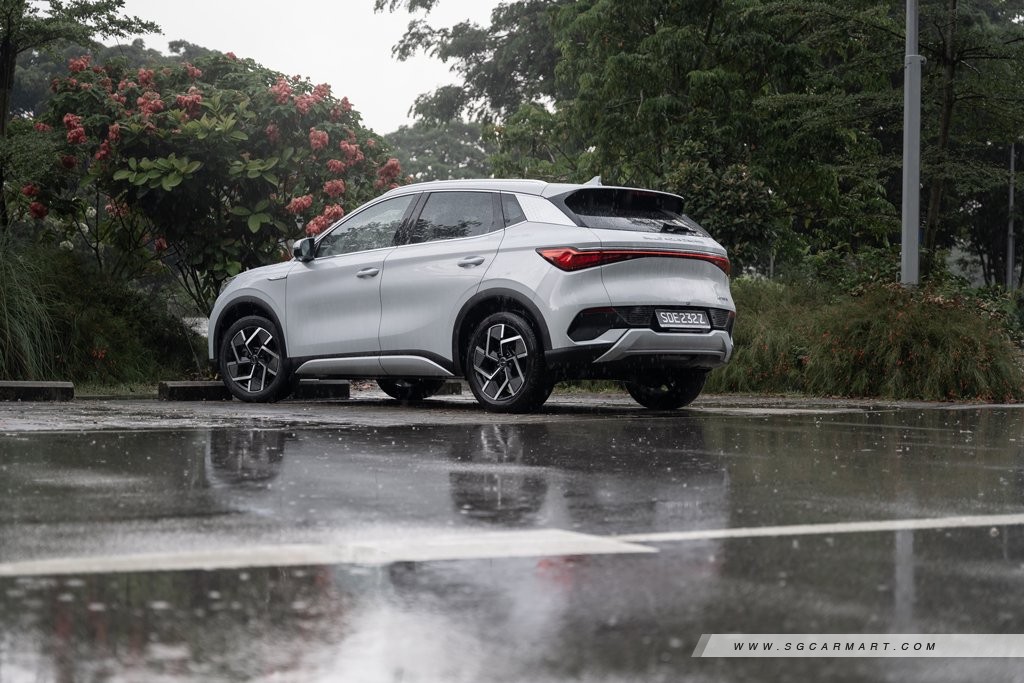BYD Atto 3 Electric 60.5 kWh [100kW] (A) Review
11 May 2023|26,604 views
What We Like
Same equipment as Cat B model
Similar performance for city driving
Less expensive
What We Dislike
Interior styling still polarises opinions
Only responsive in Sport mode
When carmakers offer a more affordable variant of a particular model, buyers know that it comes with less power and equipment. After all, since you're paying a lower price, you must make compromises.
BYD, however, is bucking this trend with the 'lighter' version of its popular Atto 3 electric crossover. It's a Cat A COE model that currently costs $20,000 less than its Cat B sibling, but with the same level of equipment.
Now, you're probably thinking that there must be a catch, right? Impressively, there isn't. The 100kW Atto 3 is the base model, but it's arguably even more compelling than its sibling.
Spot the differences - if you can
I walked up to the 100kW Atto 3 expecting to see things like smaller wheels or unpainted body panels, but there weren't any. The entry-level Atto 3 is identical to the 150kW model.
LED head lights and taillights remain standard. You still get the same 18-inch wheels and 215/55 series tyres found in the more expensive model. And since the Atto 3 doesn't have any badges to designate its powertrain's state-of-tune, there's no way to tell both variants apart.
Is there a downside to both variants looking identical? Frankly, no. From a consumer's perspective, this is good news. Why should a car that offers even better value-for-money look pared-down to begin with, unless doing so is the only way to reduce its cost?
Frankly, only folks who are into one-upmanship might think so, since they can't proclaim that their Atto 3 is the more expensive Cat B model while they're driving.
It's the same story when you get behind the wheel - there's nothing that differentiates the 100kW Atto 3 from the 150kW version, and again, this is good news.
You won't suddenly find fabric seats, or a smaller infotainment display either. In fact, the screen can still be electronically rotated so users can choose either portrait (vertical) and landscape (horizontal) orientation to suit their preference.
Speaking of infotainment, BYD has upgraded the unit so it now has a voice command function. Just like the systems in the latest Mercedes-Benz and BMW models, you can say "Hi BYD" or simply "BYD" to prompt the system.
I found it useful to raise or lower the air-con temperature without needing to use the touchscreen, helping me keep my eyes on the road. However, the system did not respond to requests to increase or decrease the fan speed. I'm either not saying it right, or the function needs to be added.
That small catch
There was always going to be a catch with the base model Atto 3, but it does not come as a surprise. Obviously, to qualify for Cat A COE, the car's power output had to be reduced. So, instead of 201bhp, the electric motor here produces 134bhp.
Correspondingly, the 100kW Atto 3's century sprint time increases from 7.3 seconds to 9.7 seconds. But driving around Singapore, the dip in performance is negligible. Besides, the all-important torque figure still stands at 310Nm, and in an EV, this is available immediately.
That said, you should set the drive mode to either Normal or Sport for a snappier response. There's nothing wrong with Eco, but many drivers will probably prefer the latter modes' sprightlier feel and feedback.
With the same 60.5kWh Blade battery as the 150kW Atto 3, the Cat A Atto 3 has the same WLTP-Combined range of 420km. After covering 230km over three days, the remaining charge was 35% and the estimated driving range was 146km.
Had I continued driving, I would have covered just over 380km before needing to recharge. Half my mileage was from expressway driving, though, so perhaps more city driving, which results in more regenerative braking to recharge the batteries, would have extended the range.
Still the question: Yay or nay?
Yay. It's hard not be swayed by the 100kW Atto 3, which is nearly identical in every way to the 150kW version except in terms of power. You get the same specifications, and more importantly, the same levels of safety, at a lower sticker price.
Quicker performance is the only reason to buy the more expensive variant. Even then, one should ask whether it's worth forking out another $20,000 just to gain 2.4 seconds.
If you're seeking a well-equipped electric crossover as a daily driver, then the Cat A Atto 3 is worth considering. Frankly, the only question at this point is: Why didn't BYD introduce it earlier?
Looking for electric SUVs? These stories may interest you
The Atto 3 marries better performance with great practicality, and serves as an appetiser of what's next for BYD
The Niro Electric offers standout styling, along with a drive that ensures it will also stand out from the rest of the Kia range, and its rivals
A strong mid-life refresh adds welcome polish to the MG ZS's approachable electric template - but it now carries a bigger price tag
The Peugeot e-2008 is an electric compact crossover that would be suited to a first-time EV owner who wants something that's chic, fun, and easy to drive
Compact dimensions and a zippy drivetrain make the Opel Mokka-e an accomplished inner-city runabout
Could this be your next electric car? See more of the Atto 3 here!
What We Like
Same equipment as Cat B model
Similar performance for city driving
Less expensive
What We Dislike
Interior styling still polarises opinions
Only responsive in Sport mode
When carmakers offer a more affordable variant of a particular model, buyers know that it comes with less power and equipment. After all, since you're paying a lower price, you must make compromises.
BYD, however, is bucking this trend with the 'lighter' version of its popular Atto 3 electric crossover. It's a Cat A COE model that currently costs $20,000 less than its Cat B sibling, but with the same level of equipment.
Now, you're probably thinking that there must be a catch, right? Impressively, there isn't. The 100kW Atto 3 is the base model, but it's arguably even more compelling than its sibling.
Spot the differences - if you can
I walked up to the 100kW Atto 3 expecting to see things like smaller wheels or unpainted body panels, but there weren't any. The entry-level Atto 3 is identical to the 150kW model.
LED head lights and taillights remain standard. You still get the same 18-inch wheels and 215/55 series tyres found in the more expensive model. And since the Atto 3 doesn't have any badges to designate its powertrain's state-of-tune, there's no way to tell both variants apart.
Is there a downside to both variants looking identical? Frankly, no. From a consumer's perspective, this is good news. Why should a car that offers even better value-for-money look pared-down to begin with, unless doing so is the only way to reduce its cost?
Frankly, only folks who are into one-upmanship might think so, since they can't proclaim that their Atto 3 is the more expensive Cat B model while they're driving.
It's the same story when you get behind the wheel - there's nothing that differentiates the 100kW Atto 3 from the 150kW version, and again, this is good news.
You won't suddenly find fabric seats, or a smaller infotainment display either. In fact, the screen can still be electronically rotated so users can choose either portrait (vertical) and landscape (horizontal) orientation to suit their preference.
Speaking of infotainment, BYD has upgraded the unit so it now has a voice command function. Just like the systems in the latest Mercedes-Benz and BMW models, you can say "Hi BYD" or simply "BYD" to prompt the system.
I found it useful to raise or lower the air-con temperature without needing to use the touchscreen, helping me keep my eyes on the road. However, the system did not respond to requests to increase or decrease the fan speed. I'm either not saying it right, or the function needs to be added.
That small catch
There was always going to be a catch with the base model Atto 3, but it does not come as a surprise. Obviously, to qualify for Cat A COE, the car's power output had to be reduced. So, instead of 201bhp, the electric motor here produces 134bhp.
Correspondingly, the 100kW Atto 3's century sprint time increases from 7.3 seconds to 9.7 seconds. But driving around Singapore, the dip in performance is negligible. Besides, the all-important torque figure still stands at 310Nm, and in an EV, this is available immediately.
That said, you should set the drive mode to either Normal or Sport for a snappier response. There's nothing wrong with Eco, but many drivers will probably prefer the latter modes' sprightlier feel and feedback.
With the same 60.5kWh Blade battery as the 150kW Atto 3, the Cat A Atto 3 has the same WLTP-Combined range of 420km. After covering 230km over three days, the remaining charge was 35% and the estimated driving range was 146km.
Had I continued driving, I would have covered just over 380km before needing to recharge. Half my mileage was from expressway driving, though, so perhaps more city driving, which results in more regenerative braking to recharge the batteries, would have extended the range.
Still the question: Yay or nay?
Yay. It's hard not be swayed by the 100kW Atto 3, which is nearly identical in every way to the 150kW version except in terms of power. You get the same specifications, and more importantly, the same levels of safety, at a lower sticker price.
Quicker performance is the only reason to buy the more expensive variant. Even then, one should ask whether it's worth forking out another $20,000 just to gain 2.4 seconds.
If you're seeking a well-equipped electric crossover as a daily driver, then the Cat A Atto 3 is worth considering. Frankly, the only question at this point is: Why didn't BYD introduce it earlier?
Looking for electric SUVs? These stories may interest you
The Atto 3 marries better performance with great practicality, and serves as an appetiser of what's next for BYD
The Niro Electric offers standout styling, along with a drive that ensures it will also stand out from the rest of the Kia range, and its rivals
A strong mid-life refresh adds welcome polish to the MG ZS's approachable electric template - but it now carries a bigger price tag
The Peugeot e-2008 is an electric compact crossover that would be suited to a first-time EV owner who wants something that's chic, fun, and easy to drive
Compact dimensions and a zippy drivetrain make the Opel Mokka-e an accomplished inner-city runabout
Could this be your next electric car? See more of the Atto 3 here!
Car Information
BYD Atto 3 Electric
CAT A|Electric|6.25km/kWh
Horsepower
98kW (132 bhp)
Torque
310 Nm
Acceleration
9.7sec (0-100km /hr)
Thank You For Your Subscription.






































































